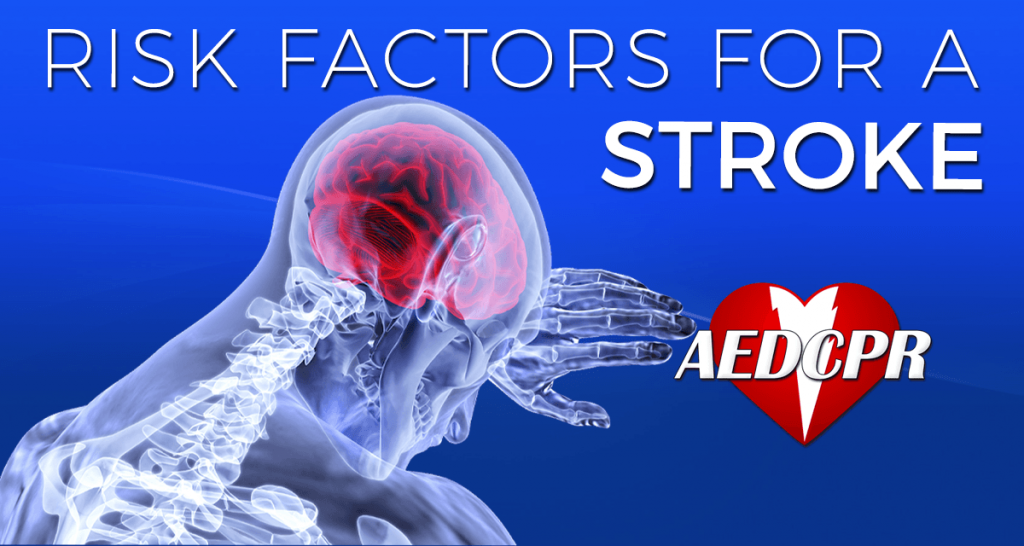
A stroke is a serious medical emergency. Having a stroke can be fatal, or result in lifelong complications. Because of this, it is important to know whether or not you are at risk of having a stroke, so you can take steps to reduce that risk.
What is a Stroke?
A stroke occurs when the brain’s blood supply is suddenly interrupted. There are two main types of stroke: ischemic strokes and hemorrhagic strokes.
Ischemic strokes are the most common type of stroke. They happen when the arteries leading to the brain become blocked, cutting off the brain’s supply of blood and oxygen. On the other hand, hemorrhagic strokes occur when blood vessels in the brain burst, causing leakage into the brain’s tissue. As a result of the extra fluid, the brain’s tissue compresses. Stroke symptoms usually last 24 hours or more, and can be permanent, especially if left untreated.
Sometimes, people experience something called a transient ischemic attack (TIA). Like a stroke, TIAs occur when blood flow to the brain is interrupted. However, TIAs usually resolve within 24 hours and do not result in permanent damage to the brain.
Brain cells begin to die within minutes of a stroke starting, so it is important to receive treatment as soon as possible.
Who is at risk for a Stroke?
A stroke can happen to people of any age, although it is more common in older people. There are many factors that can increase your risk of having a stroke. Some of these factors cannot be changed, while others can.
Uncontrollable Risk factors
Age is a primary risk factor in all types of cardiovascular disease, including stroke. The older you get, the higher your risk becomes. However, stroke incidence in people under 65 is on the rise, along with a rise in other cardiovascular disease.
Race also appears to play a role in stroke risk. If you are Black, Hispanic, Native American, you may be at an increased risk of having a stroke.
Gender also plays a role in stroke risk. Women have higher rates of stroke mortality than men. This can partly be attributed to a higher average lifespan than men, as well as other factors such as pregnancy or contraceptive usage.
Finally, it is important to note that, like many medical conditions, the risk for stroke can run in families. If your parents or grandparents have had a stroke in the past, you may be at increased risk.
Modifiable Risk factors
Not all risk factors are out of your control. Some risk factors can be managed or treated through lifestyle changes.
High Blood Pressure (hypertension) is the leading cause of stroke around the world. Normal blood pressure is below 120/80mm Hg. If you have been diagnosed with high blood pressure, it is important to manage it with diet improvements, exercise, and medications if needed. High blood pressure is the single most important risk factor for stroke, and is closely linked with many other metabolic diseases and risk factors.
High Cholesterol is another risk factor. It can contribute to stroke by causing blockages in the arteries. High cholesterol can lead to plaque build up in the arteries, which also contributes to high blood pressure. In fact, the two conditions often go hand-in-hand. Therefor, if you have high cholesterol, it’s important to manage it with lifestyle changes and medication.
If you have type 1 or type 2 diabetes, you may also be at increased risk of stroke. Uncontrolled high blood sugar over a prolonged period can damage blood vessels, which can increase the likelihood of a blockage. If you have diabetes, talk to your doctor about how to best manage blood glucose and achieve your A1C goals.
Obesity and lack of exercise are among the most important lifestyle risk factors. They are contributing factors to a host of health issues, including high blood pressure, high cholesterol and type 2 diabetes. Maintaining a healthy weight and exercising can reduce your risk for, or manage, many of these conditions.
Smoking can damage more than just your lungs. In fact, smoking leads to plaque buildup in your arteries, which can contribute to a stroke and high blood pressure. If you smoke, it’s never too late to quit.
Other risk factors to consider
If you have had a stroke, a transient ischemic attack, or a heart attack in the past, you are at increased risk of another. This is especially true if your stroke, TIA or heart attack happened in the last 5 years.
Some medical conditions can contribute to stroke. For example, atrial fibrillation (AFib) and other types of heart disease can increase your risk. Blood disorders can also increase your risk, like sickle cell disease.
Certain forms of substance abuse can lead to stroke. Drugs like cocaine and methamphetamine can cause blood vessels to narrow or leak, causing a stroke. Alcohol abuse can also cause a stroke.
The bottom line
The more risk factors you have, the greater the risk. For many, it is possible to significantly reduce your risk for a stroke by improving health markers like blood pressure, cholesterol, weight, etc. with exercise and a healthy lifestyle. If you have concerns about your risk, it’s important to have a doctor assess you and work on a plan to reduce your risk. If you’ve already had a stroke, you can still mitigate the risk of having another.
